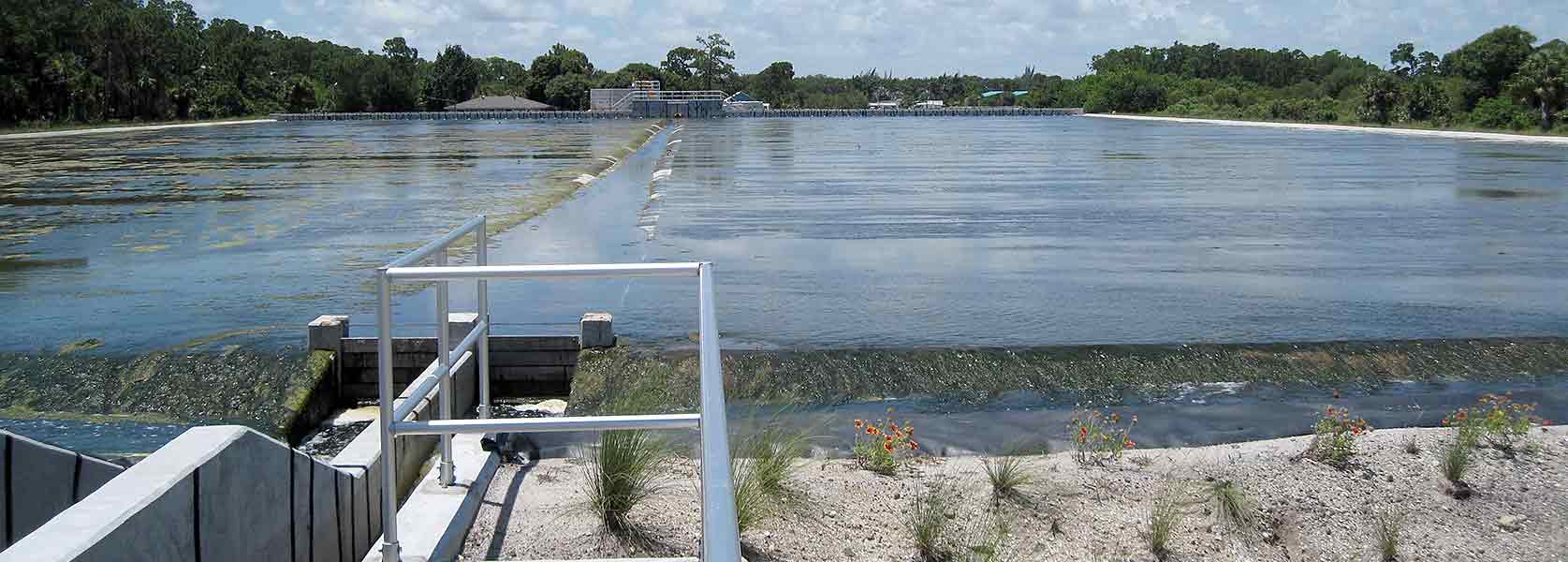HydroMentia’s pollution control systems can be designed to reduce pollutants to natural background levels at a fraction of the capital and operating costs of competing technologies. No other technology has been shown to reduce nutrient pollutants to background levels (10-40 ppb total phosphorus) while converting residuals to a marketable commodity.
 Passive wetland treatment systems currently serve as the primary technology for regional stormwater treatment to achieve low-level phosphorus standards. However, a number of challenges confront passive wetland systems including: (1) long-term effectiveness at higher pollutant loads (non-sustainability without sediment management); (2) restricted applicability in settings where land is limited; (3) and detrimental impacts to communities when land is taken off the local tax roll and out of productive use.
Passive wetland treatment systems currently serve as the primary technology for regional stormwater treatment to achieve low-level phosphorus standards. However, a number of challenges confront passive wetland systems including: (1) long-term effectiveness at higher pollutant loads (non-sustainability without sediment management); (2) restricted applicability in settings where land is limited; (3) and detrimental impacts to communities when land is taken off the local tax roll and out of productive use.
Algal Turf Scrubber® systems minimize these challenges through high hydraulic loading rate capabilities, and the regular recovery and recycling of algal biomass developed during decades of research and implementation.
A study by the University of Florida concluded that Algal Turf Scrubber® phosphorus treatment costs ($/kg P-removed) for proposed treatment systems in the Lake Okeechobee watershed were 53–69% lower than costs for wetland stormwater treatment areas, even when assigning value to the wetland stormwater treatment areas for water storage and recreational benefits.
[1] USACE, SFWMD, HDR. October 2003. Lake Okeechobee Watershed Project Draft PIR, Water Quality Treatment Ranking (TPIN=261 ppb, TPOUT=100 ppb, 61.6% Removal, 97,500 AF/yr) [2] HydroMentia. April 2005. Single Stage Algal Turf Scrubber Present Worth Cost & By-Product Market Analysis. (TPIN=200 ppb, TPOUT=146ppb, 27.0% Removal, 56,000 AF/yr, Pump Costs Included)

